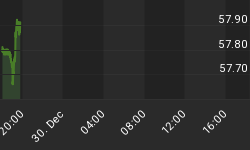Expectations are mounting over the Fed reducing its Treasury program in December, which could cause the US dollar index to appreciate to 81.60 in the short term. Nonetheless, the Fed should keep its monetary policies unchanged until 2014. As a result, any potential dollar appreciation would be short-lived.
Fed should stay on hold
The latest data confirms that the US economy did not gain momentum after a very slow summer. In September, it created only 148,000 new jobs, which is in line with the July and August average of 151,000, but far below the benchmark of 200,000. Employment in private service-producing industries is underperforming, with only 100,000 new positions added in September. The unemployment rate is now 7.2%, while wage expansion is just above the inflation level at 2.1%. The next few months will be critical. In fact, the data for October could also reflect the government shutdown. As a result, the Federal Reserve should wait until the first six months of next year to decrease the quantity of Treasury purchases. The US dollar index could rise to around 81.60 before December's decision and then decline toward 78.00 by year's end.
Unemployment rate could rise in 2014
The nominee for new Fed Chair, Janet Yellen, is considered a dove. As a result, continuity with her predecessor's monetary policy, whose mandate expires at the end of January 2014, should be her priority. Interest rates will remain low for as long as necessary, and bond purchases might continue in the future as well. However, she is apparently also a pragmatist and will not hesitate to raise rates when conditions are more favorable. When that will happen is not clear yet. Temporary setbacks are still possible, as world economies slowly move out of the recession that started in 2000. For example, the unemployment rate could rise again before finally dropping. Let us see how. Since 1948, the unemployment rate has had two bullish cycles (1952-61, 1969-1982). In both cycles, the unemployment rate climbed in three distinct waves. Declines prior to the final wave lasted four (1975-1979) and two (1958-1960) years.
How would it fit in today's scenario? Unemployment began in 2000. It peaked in 2003, bottomed out in 2007, and completed the second wave in 2009. The third and final wave is still missing. It could happen in 2014, if history repeats itself.
















